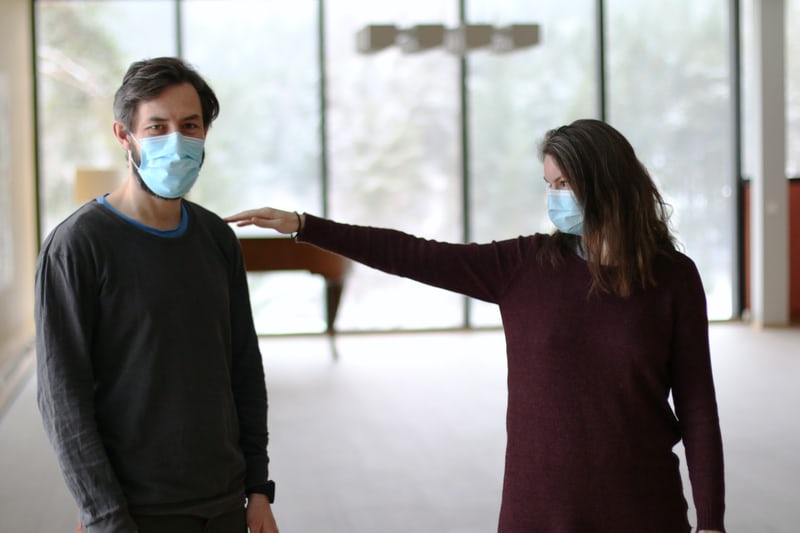In the Age of Social Distancing.
by Reece Roth
While the current COVID-19 pandemic continues to spread across the planet, many of society’s everyday actions have been drastically changed in order to prevent any further spreading of the virus. One of the biggest methods of prevention has been the introduction of social distancing into everyday life. Many people have heard this term by now, but the question still stands: What exactly is social distancing, and how does it contribute to the prevention of spreading COVID-19?
The term “social distancing” is very similar to what it sounds like. When someone practices social distancing, they’re limiting any physical contact with other people, so they won’t spread any germs and lower the risk of contracting any disease. A few examples of social distancing include avoiding large crowds and not shaking anyone’s hand.

“In addition to everyday steps to prevent COVID-19, keeping space between you and others is one of the best tools we have to avoid being exposed to this virus and slowing its spread locally and across the country and world,” states an article from the Centers for Disease Control and Prevention on how to properly practice social distancing. In the text, it explains how Coronavirus mainly spreads to people when they come in close contact with others. If an infected person sneezes or coughs, those droplets can enter someone else’s nose, mouth, or lungs. Many professionals recommend staying at least six feet apart so these droplets can’t enter someone’s body.
Another tactic that professionals suggest while practicing social distancing is avoiding any large groups. Many areas in the United States have placed regulations that ban any gatherings of ten people or more. Other places are only allowing a certain number of people at a time to enter the grocery stores in order to be as careful as possible.
“Risk of disease transmission is much higher in large groups of people. Effective March 25 at 5 PM in North Carolina, meetings of over 10 people are prohibited in order to prevent COVID-19 from spreading rapidly. Avoiding these gatherings are generally in the best interest of protecting yourself, your loved ones and your community,” states a piece from Cone Health as a question and answer session regarding social distancing.
The more people are close together, the easier it can be for a sick individual to spread germs on someone else in that group. Another person could become infected, which leads to them infecting someone else. This cycle continues until the entire group is now at risk. By avoiding large groups, it prevents a scenario like this from happening and lowers the chances of people becoming infected.
Practicing social distancing is different for a lot of people. Thankfully, in the world we live in today, we have the technology opportunities to stay in contact with friends and loved ones, even if we can’t see them in person. The more all of us continue to do our part and participate in social distancing, the sooner we can go back to seeing those we care about in person again.
Categories: Featured, People